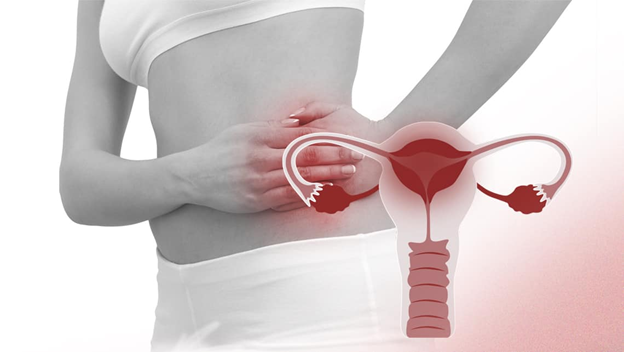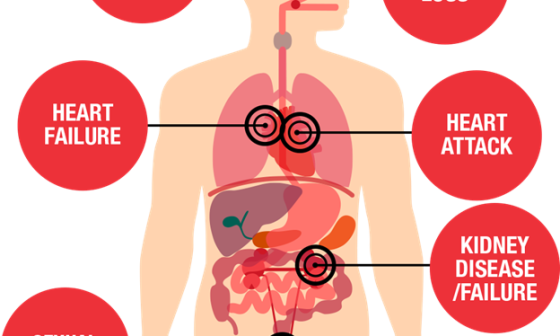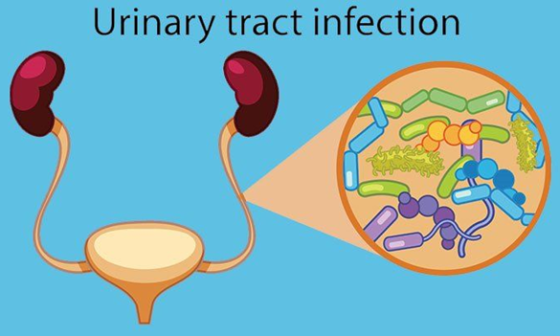Introduction
Frequently, when you consider health issues as important and deserving of a hospital visit, you envision excruciating symptoms, dramatic situations, or death.
But sometimes some conditions sneak up and have a small but big effect on your health. Pelvic Inflammatory Disease (PID) is one such condition. If left to fester, this often-ignored illness can have major complications on your reproductive health.
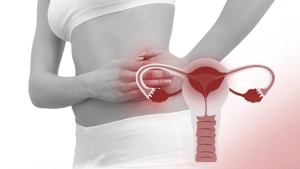
Source: Instituto Bernabeu
PID is an extremely dangerous bacterial infection of the female reproductive system that happens when bacteria enter the reproductive system from sexually transmitted infections (STIs). PID might be compared to an unwanted party guest that quietly causes mayhem, generating disturbances you may not notice right away but will find difficult to ignore as they begin to negatively impact the entire event.
With this article, We will explain PID, its symptoms, its impact on the body, and how early detection and treatment remain a crucial part of forestalling complications that may arise.
Understanding Pelvic Inflammatory Disease
PID is an infection of the female reproductive system that affects the uterus, fallopian tubes, and ovaries. Usually, occurs when bacteria enter the reproductive organs from the cervix or vagina during sexual intercourse.
PID usually starts with a bacterial infection, which is frequently the result of STIs However, PID can be caused by a variety of bacterial organisms, not just bacteria that cause sexually transmitted illnesses (STIs) like gonorrhoea or chlamydia. On occasion, other conditions that can cause PID in women include childbirth, miscarriage, or abortion.
From the cervix, the bacteria can ascend into the uterus, whereupon it can proceed to the ovaries and fallopian tubes. Due to its insidious manner, pelvic inflammatory disease can manifest as a variety of symptoms, ranging from moderate discomfort to excruciating pain, abnormal vaginal discharge, to fertility problems. It’s therefore, critical to recognize the symptoms and get medical help as soon as possible.
Symptoms of Pelvic Inflammatory Disease
The difficult portion is in recognizing the symptoms for both the affected woman and the attending physician because the initial symptoms of PID are usually mild and can be written off as small irritations or misdiagnosed as something else entirely.
That is why cases with any abnormal symptom should mild should always be checked, symptoms include:
- Lower abdominal/ pelvic pain that ranges from mild to intense
- Atypical/ abnormal discharge with an unpleasant odour and distinct colour that could be yellow or green.
- Fever and chills
- Pain during urination- this is the most significant symptom that could indicate pelvic inflammation.
- Pain during sexual activity (dyspareunia) might be a clear indicator of PID.
- Bleeding between periods
Diagnosis and Treatment of PID
Physical examination, medical history, and occasionally laboratory testing such as pelvic ultrasounds or cultures are used to diagnose PID. Antibiotics are usually used as a treatment to eradicate the infection; if the condition is severe, hospitalization is generally necessary. Additionally, follow-up care is crucial as routine check-ups will be needed to ensure the infection is completely treated and to keep an eye out for any potential problems.
Complications of Pelvic Inflammatory Disease
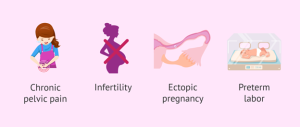
Source: inviTRA
The complications of a disease are the long-term impacts that disease can have on our health if left untreated or poorly treated. PID is more than pain or abnormal discharge if left untreated, it can lead to several risks that include:
- Ectopic pregnancy: An ectopic pregnancy is a dangerous and sometimes fatal condition that can occur when an egg implants outside the uterus as a result of blocked fallopian tubes due to PID.
- Chronic discomfort: Prolonged pelvic discomfort has the potential to worsen day-to-day functioning and general well-being leading to economic and psychological breakdown.
- Infertility: PID may result in fallopian tube obstructions and scarring, which may make it more difficult to conceive and could result in infertility.
- Pelvic abscess: PID may occasionally result in the development of pus-filled cysts in the reproductive organs, necessitating surgery and hospitalizations.
How can I prevent PID?
You may be asking the question, well there are a few practices that will help you safeguard your health from bacterial infections and those around you, they include:
- Always practice safe sex to lower the risk of STIs use condoms.
- If you are sexually active and have a partner, it is wise to get STI testing.
- To avoid complications, treat any STI or infection symptoms as soon as they appear.
Conclusion
Pelvic Inflammatory Disease (PID) is a dangerous disease, but its effects can be reduced with knowledge and preventative actions. You can protect your reproductive health and general quality of life by being aware of the warning signs, getting help, and engaging in preventive care.
Wellahealth offers affordable healthcare coverage for as low as 2400/ quarter. This covers prompt medical attention, adequate testing, and genuine treatments. Contact us today to get one for you and your family!
Dr. Ifeoma M. Uduh, Dr. John Afam- Osemene
